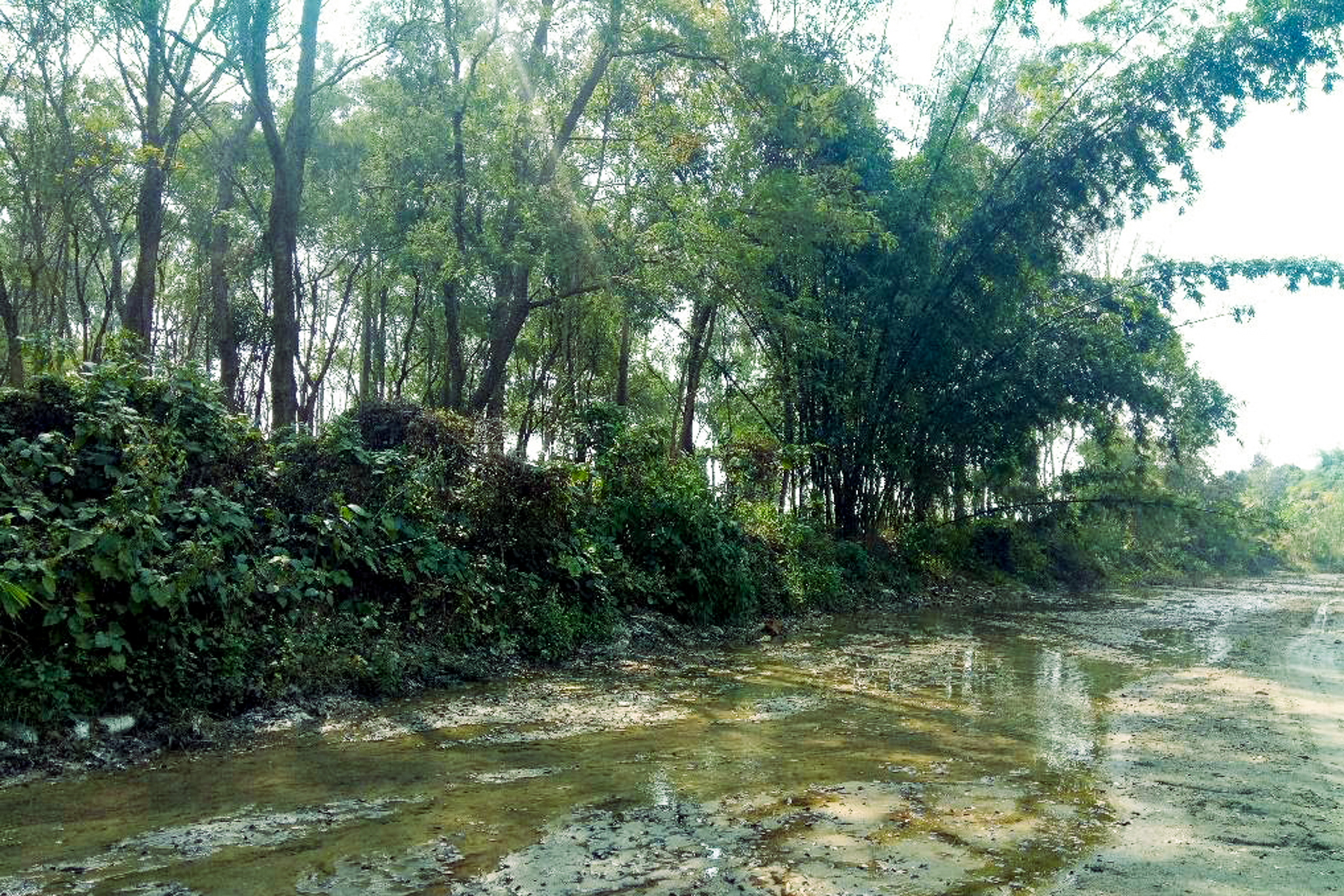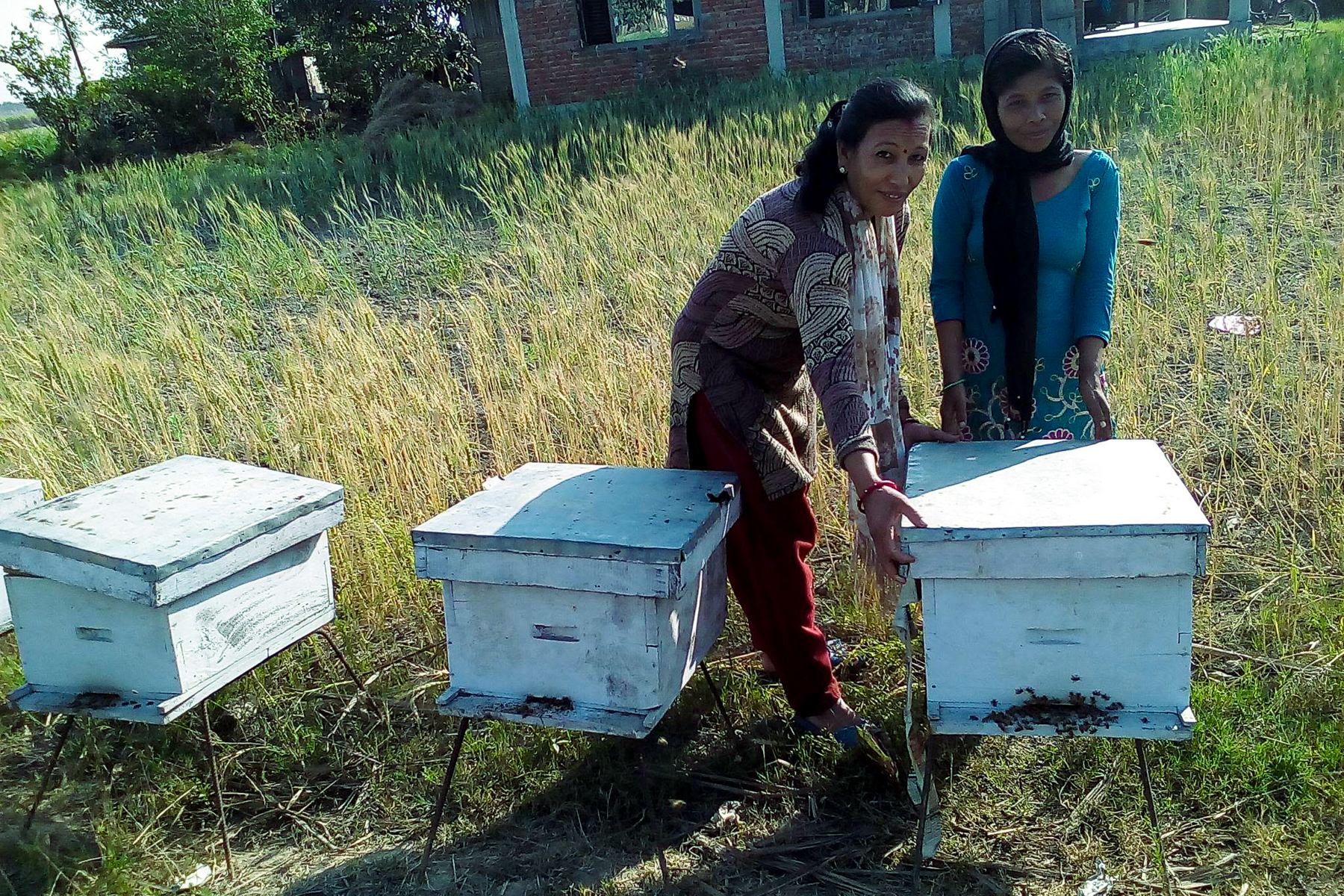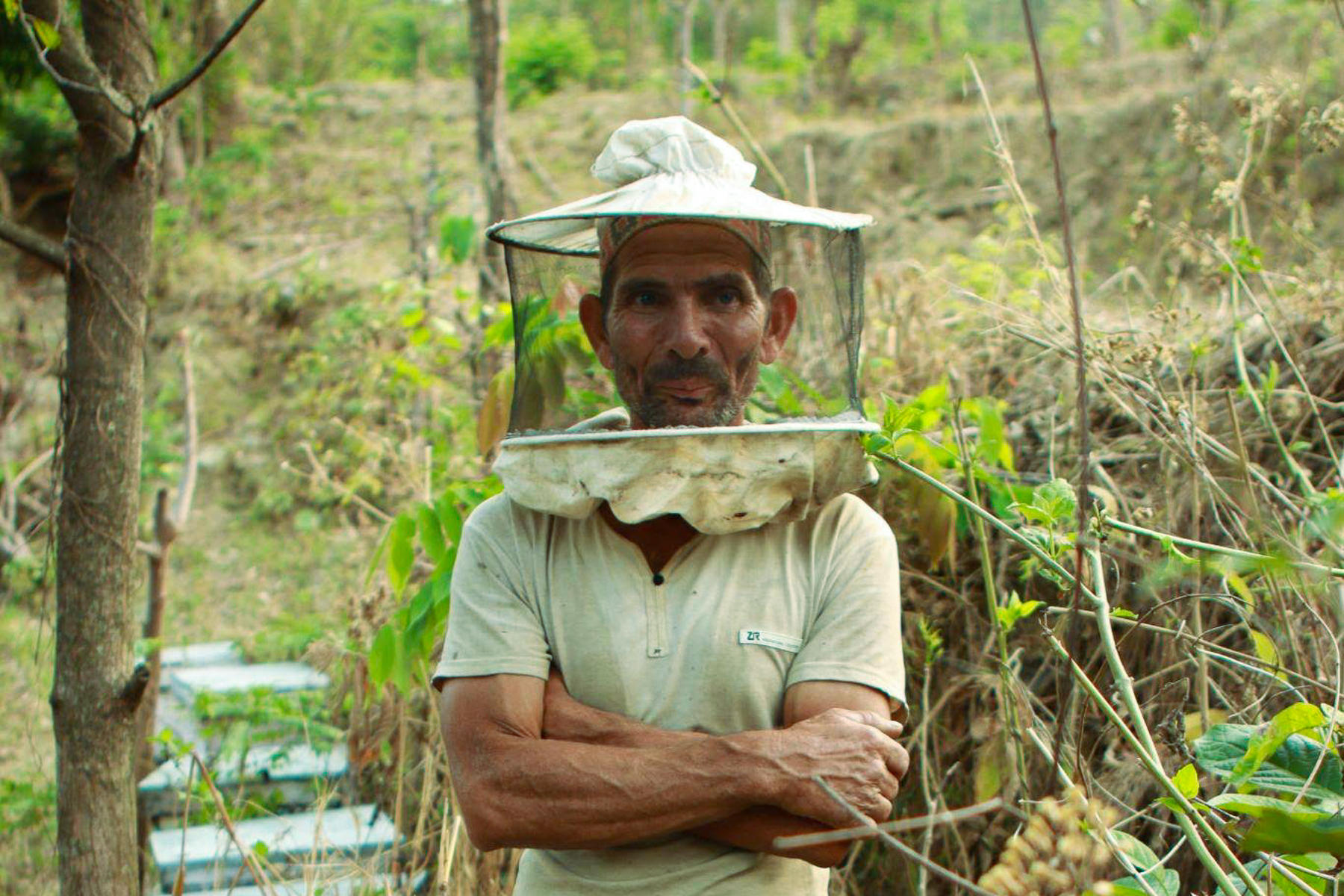



The aim is to use nature-based interventions identified by the feasibility assessment to address sources of climate vulnerabilities. To do this, the community forest user group leadership mobilizes resources and people, and works with partner organizations identified in the feasibility assessment to access resources and technology.
In Bishnupur, the women leaders of the community forest user group worked with RECOFTC to buy around 300 mango and lychee tree seedlings at subsidized rates from the regional horticulture development centre. RECOFTC provided beehives and training on beekeeping.
To address water shortages and protect existing water sources, the community forest user group accessed technical and financial support from the government’s Bagmati Irrigation Project to install a deep well. RECOFTC and the community forest user group covered the shortfall in finance.
To stabilize the riverbank, the user group members built a retaining wall of stones and sandbags topped with live bamboo and other plants along a kilometre stretch of the river. They planted 200 bamboo rhizomes and 4,000 fodder-crop seedlings from the District Forest Office and the District Soil Conservation Office, together with locally available fast-growing and multipurpose grass.
The process was locally led. Local ownership contributed to Bishnupur community forest leaders exploring potential support on their own. Third-party facilitation is important, as a community’s proposals may not be the most climate sensitive, or optimal for nearby communities and their own climate resilience. Policy support is crucial. For example, Nepal’s National Adaptation Programme of Action states that 80 percent of resources for climate adaptation should go to local level, which made it easier to access finance.
A community forest user group provides a robust, self-governing institution with, to some extent, resources required to implement interventions. Such groups have strong networks, which can help them to access further resources and technical support as necessary.
Climate adaptation led by women helps to address both gender inequality and climate vulnerability, particularly that of women and the poorest members of a community.